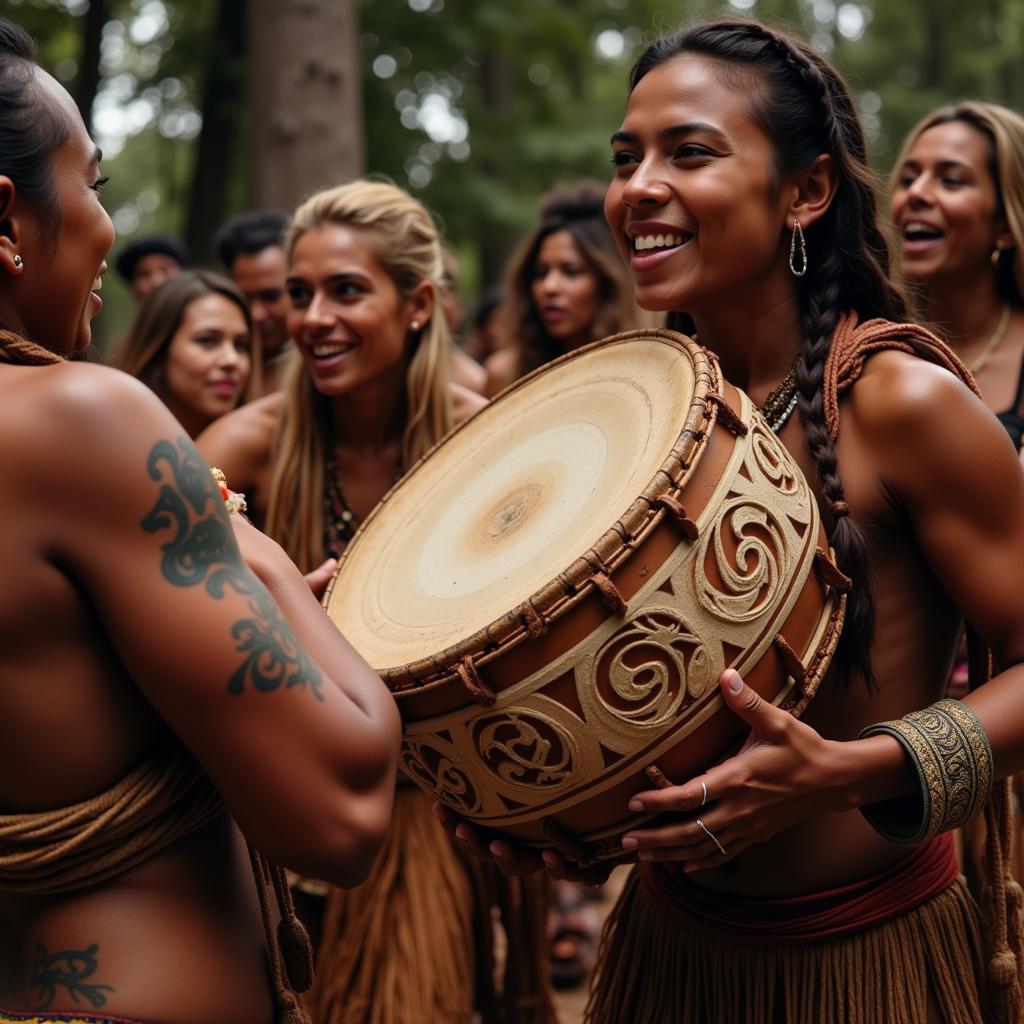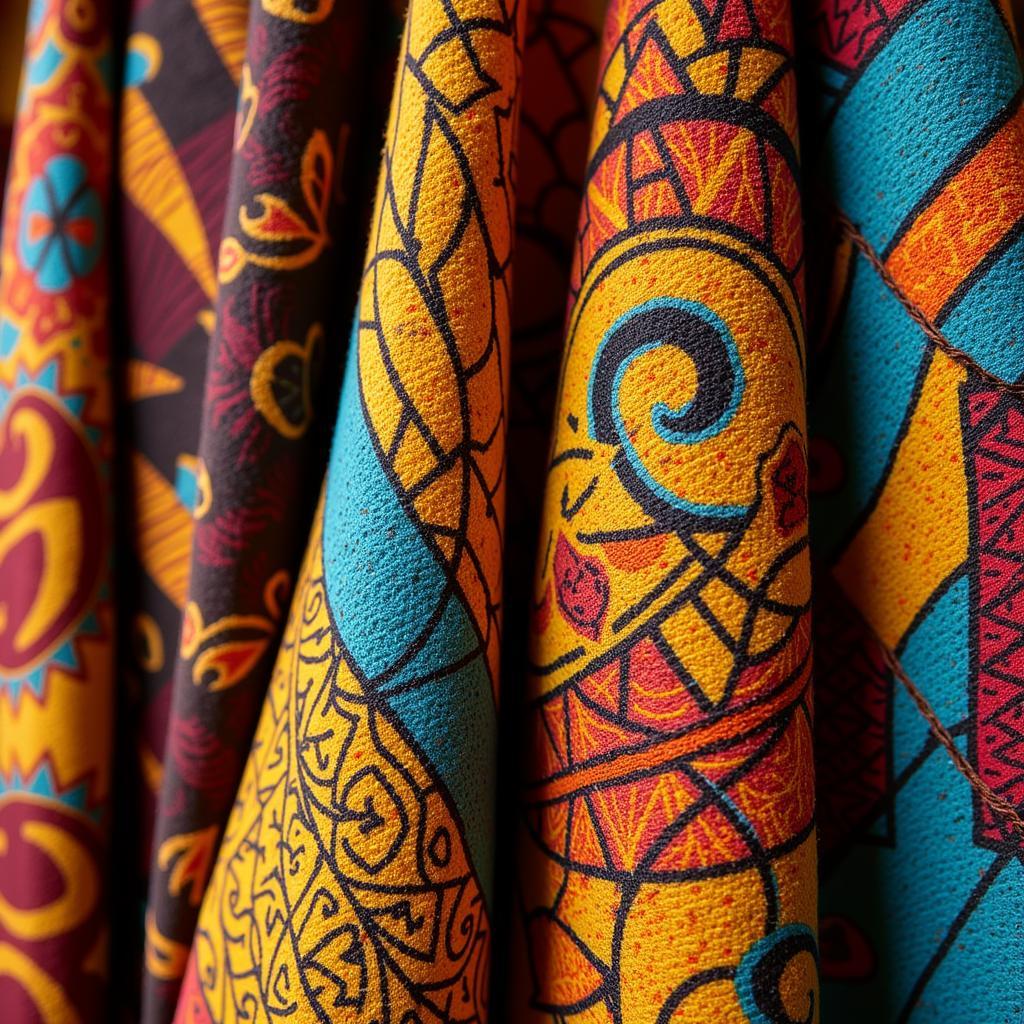The African Hand Drum: A Heartbeat of Culture and Tradition
The African Hand Drum is much more than a musical instrument; it is a powerful symbol deeply intertwined with the history, spirituality, and social fabric of the continent. Found in various forms across Africa, these drums represent a rich tapestry of cultural heritage passed down through generations. From celebratory dances to sacred rituals, the rhythmic beats of the African hand drum echo the very soul of the continent.
A Legacy of Rhythms: Tracing the History of African Hand Drums
Archaeological evidence suggests that hand drums have been present in Africa for millennia. Ancient cave paintings depict early humans using drums in rituals and ceremonies. These early instruments were likely made from natural materials like hollowed-out logs, gourds, and animal skins, reflecting a close connection to nature.
Over time, the craftsmanship of African hand drums evolved, leading to the development of distinct regional styles and designs. Each region boasts its own unique drumming traditions, rhythms, and techniques, showcasing the diversity and creativity of African music.
For instance, the djembe, originating from West Africa, is renowned for its powerful sound and versatility. This goblet-shaped drum, traditionally carved from a single piece of wood, is a staple in many West African musical ensembles. Similarly, the talking drum, found in various parts of West and Central Africa, is revered for its ability to mimic the tones and inflections of human speech. This unique characteristic has made it an essential tool for communication, storytelling, and even transmitting messages across long distances.
More Than Music: The Cultural Significance of Hand Drums
Beyond their musical function, African hand drums play a vital role in countless cultural practices and beliefs. They are used to accompany traditional dances, celebrate life events like births and weddings, and mark important agricultural cycles. The rhythmic beats serve as a unifying force, bringing communities together to share in moments of joy, sorrow, and spiritual connection.
In many African cultures, hand drums are considered sacred objects, believed to possess spiritual power and the ability to connect with the ancestors. They are often used in rituals and ceremonies led by spiritual leaders or healers, invoking a sense of reverence and awe. The drums’ hypnotic rhythms are thought to facilitate trance states, allowing individuals to communicate with the spirit world and seek guidance from their forefathers.
The Language of the Drums: Communication and Storytelling
The African hand drum transcends mere musical expression; it is a powerful tool for communication and storytelling. Through intricate rhythms and variations in tone, master drummers can convey complex messages, emotions, and narratives.
The “talking drum” exemplifies this communicative aspect. By squeezing the strings connecting the drumhead to the wooden body, skilled players can alter the drum’s pitch, creating sounds that resemble human speech patterns. This ability has made it an invaluable tool for oral traditions, where historical accounts, proverbs, and folklore are passed down through generations.
 African Hand Drum Ceremony Ritual
African Hand Drum Ceremony Ritual
Preserving Tradition: The Enduring Legacy of the African Hand Drum
Despite the influence of globalization and modern music, the African hand drum continues to hold a prominent place in contemporary African society. Traditional drumming and dance groups thrive, passing on their knowledge and skills to younger generations. Music schools and workshops offer opportunities for individuals to learn the art of hand drumming, ensuring the preservation of these ancient traditions.
Moreover, African hand drums have gained international recognition and appreciation. They have found their way into various musical genres, from jazz and funk to world music and fusion, enriching global music scenes with their unique sounds and rhythms.
Conclusion
The African hand drum remains an enduring symbol of the continent’s vibrant culture and heritage. More than just a musical instrument, it represents a profound connection to history, spirituality, and community. As the rhythmic beats continue to echo across generations, they carry the stories, traditions, and spirit of Africa, captivating hearts and souls worldwide.
Frequently Asked Questions about African Hand Drums
What are African hand drums made of?
African hand drums are traditionally crafted from natural materials. Common materials include wood for the body, animal skin (like goat or cowhide) for the drumhead, and ropes or cords made from plant fibers for tuning.
What are the different types of African hand drums?
Africa boasts a wide variety of hand drums, each with its unique design, sound, and cultural significance. Some popular types include the djembe, talking drum, bougarabou, and ashiko.
Are African hand drums difficult to learn?
Learning to play African hand drums, like any instrument, requires practice and dedication. However, many resources are available for beginners, including classes, workshops, and online tutorials.
Where can I buy an authentic African hand drum?
Authentic African hand drums can be purchased from reputable music stores specializing in world instruments. You can also find them online through specialized retailers or directly from artisans in Africa.
If you need support, please contact us:
Phone: +255768904061
Email: kaka.mag@gmail.com
Address: Mbarali DC Mawindi, Kangaga, Tanzania.
We have a 24/7 customer support team.




